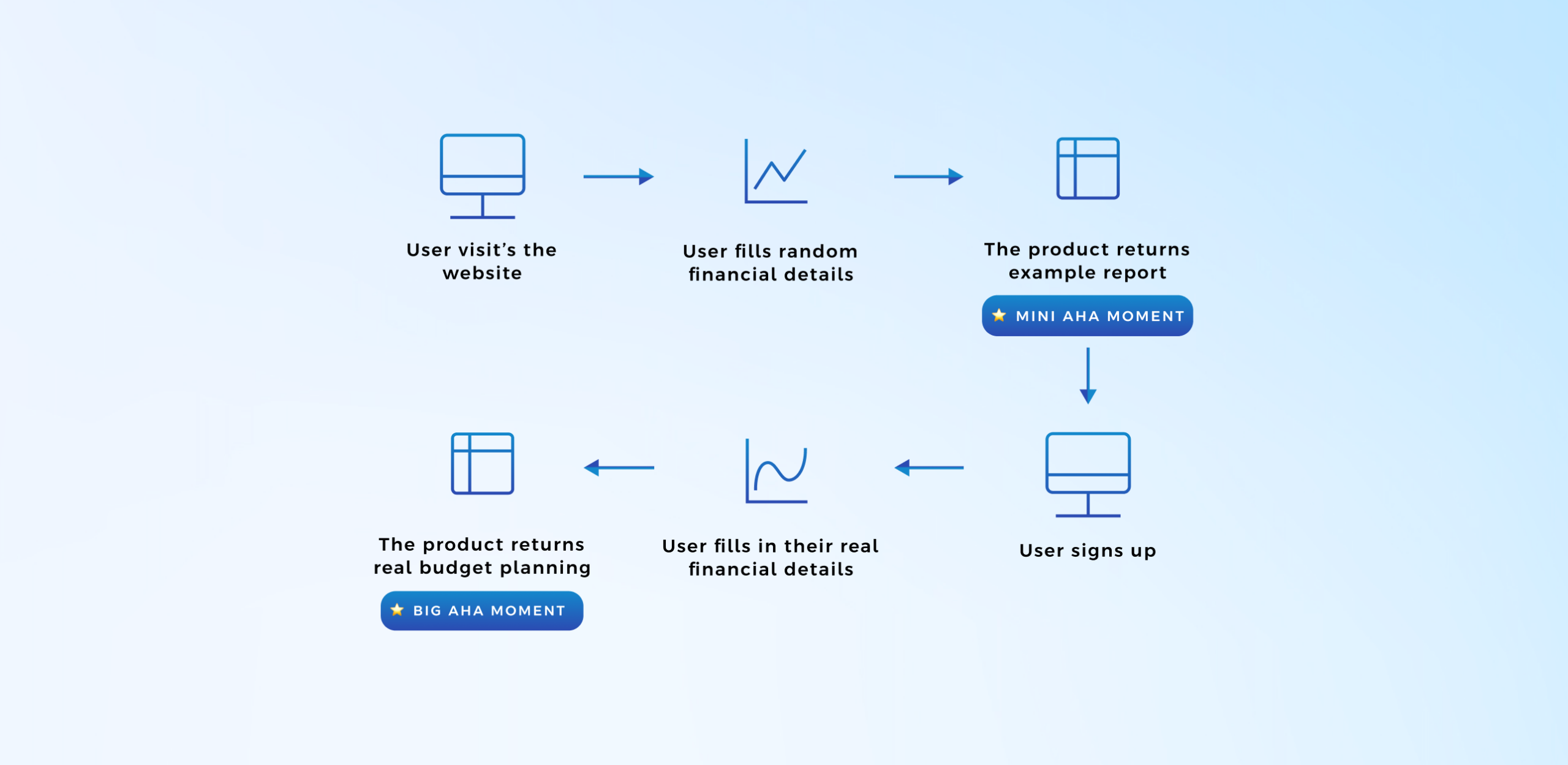It takes only 50 milliseconds for site visitors to form an opinion of your website and then decide whether or not to stay or leave. And we need to create a moment that makes them stay. That particular moment when your users find core value in your product is called an “Aha! moment”.
TL;DR
- The “Aha moment” in the Software as a Service (SaaS) industry refers to the point at which a new user understands the value of a service or product.
- It is important because the more people you get to the Aha moment, the higher your engagement and conversion rates will be.
- Also, the quicker your users get to that point, the more likely it becomes that they will stick around for longer.
- You should simplify the onboarding process to get your user to the aha moment as soon as they sign up and provide personalized recommendations so that they use the product to solve their exact problem.
- Collect customer feedback about when they had their Aha moment and what they liked most in order to determine how to guide others.
- Also, see your engagement metrics and find out what the major conversion mechanism is in your product. The answer will give you your product’s Aha moment.
What is Aha! moment in SaaS?
The “Aha! moment” in SaaS refers to the point at which a new user understands the value of a service or product. There are some small and big moments of value realization, but each matters to make the user move forward.
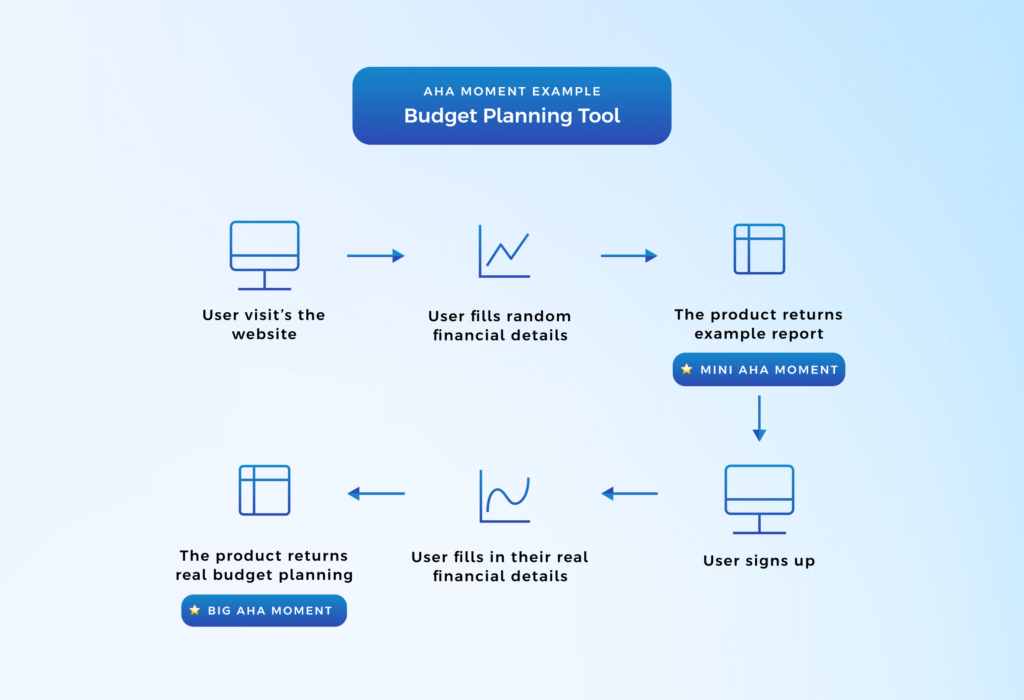
As an example, if you have a SaaS tool that helps you create automated budget plans, you need to get users to fill in their financial details and see an example report before doing anything else for them to see what your tool can do. And to get people to that point, you have to have a clear UI, an engaging UX, and a good onboarding flow.
How to create an Aha moment?
For creating an Aha! moment for SaaS, it is crucial to ask the right questions to gain valuable insights and make informed decisions. Here are some key questions to consider:
- What problem does the product solve?
- How does the product differentiate itself?
- What are the key features and functionalities?
- What is the user experience like?
- What is the pricing model?
By asking these questions, businesses can gain valuable insights and make informed decisions about the suitability and potential of a SaaS product.
Why Aha moments are important?
The importance of Aha moments in SaaS is not limited to keeping retention rates up:
- User Adoption: When users experience the aha moment quickly, they are more likely to adopt the solution and continue using it.
- Customer Satisfaction: Understanding the value and benefits of a product contributes to overall customer satisfaction and a positive user experience.
- Revenue Generation: Sustained engagement and user retention directly impact the revenue, making the Aha Moment critical for a company’s financial health.
- Product Development: Identifying the Aha Moment helps in refining and enhancing the product features and user interface, making the software more user-friendly and valuable.
- Market Differentiation: In the crowded SaaS market, a well-defined and impactful Aha Moment can set a product apart from the competition.
It is also crucial to be able to get actionable feedback from users and keep improving your business. Unless your users are able to get to the Aha moment, they won’t be able to understand your product and help you make it better.
So the first things you should do about your product are:
- Make sure you have correctly identified your Aha moment,
- Make sure the users are able to get to that point seamlessly,
- Fix any problems and reduce friction in that process.
Let me give you an example to simplify things:
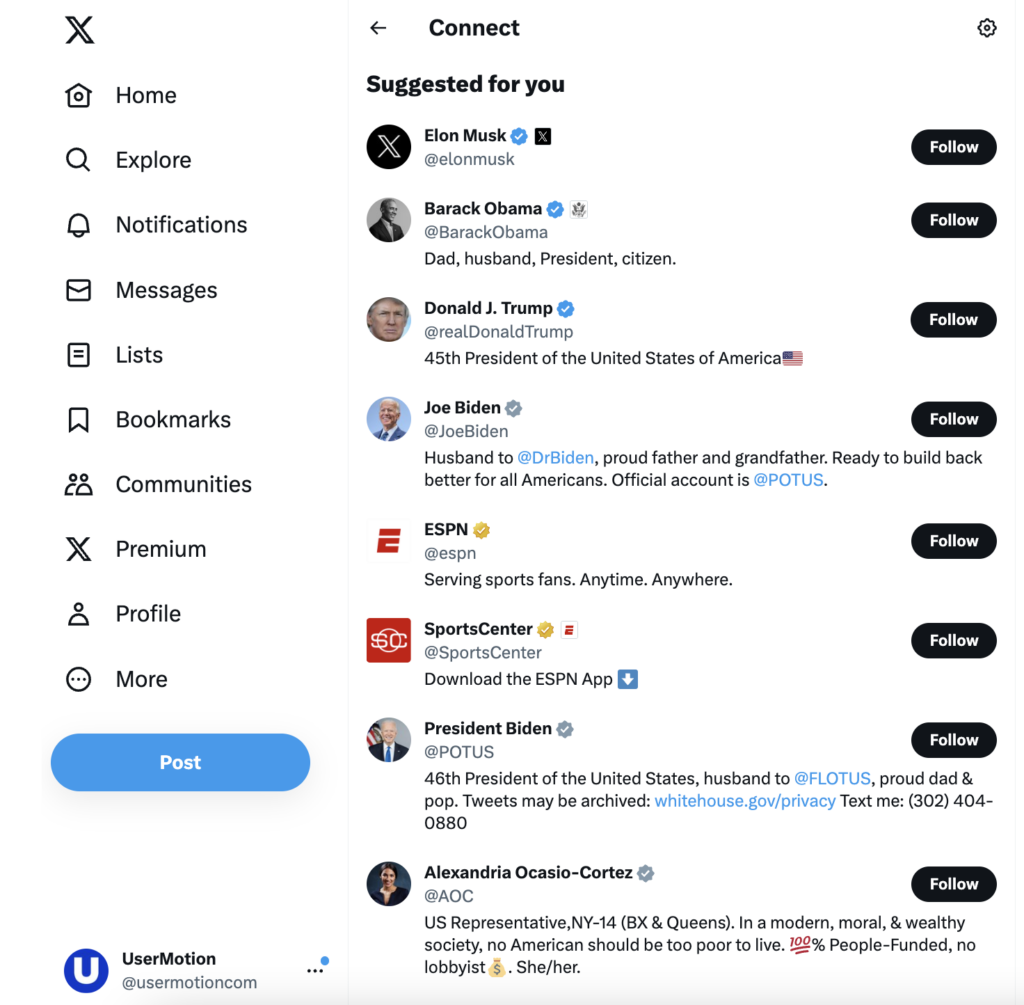
When you first sign up to X (formerly Twitter), the app asks you to follow people and accounts you might know.
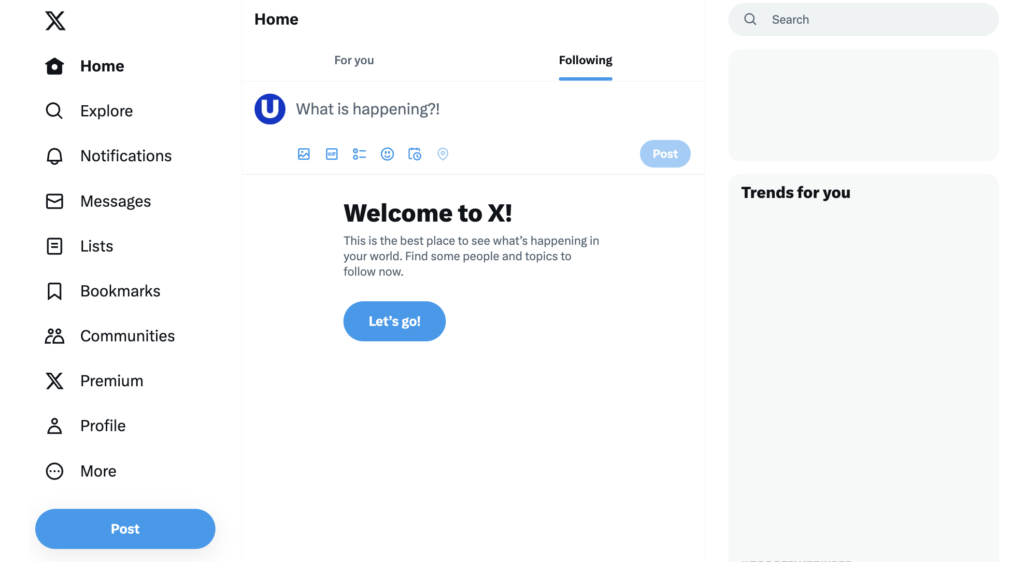
This is to prevent you from seeing an empty timeline. Since the core value of X (Twitter) is being able to follow all updates on a timeline and interacting with it, by pushing people to follow some accounts right after they sign up, they increase the chances of people liking the app and sticking around for longer.
Let’s take a look at other famous examples, but this time, let’s make them SaaS.
7 Examples of Aha Moments in SaaS
As widely known as they are, here are 7 of the best Aha! moment examples in Saas.
These examples should give you a clearer idea of how you could potentially identify your product’s Aha moment more easily, and help you get ideas about how you can show that to your customers.
AIseo
AIseo is the first example I want to mention, as I actually recently engaged with the product, but got that mini Aha! moment VERY quickly.
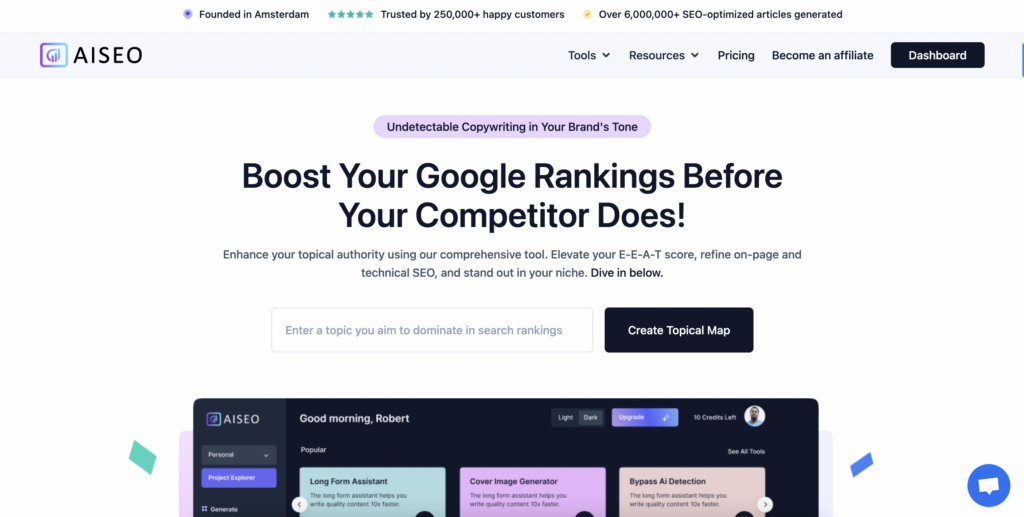
AIseo offers to create a topical map at the first moment when a user visits their landing page. The user gets value immediately from the service, which makes them sign up.
Slack
The first of our “Aha” moment case studies for SaaS companies is Slack.
Slack has two strong suits:
- It eliminates the need for never-ending email threads along with lots of lost information,
- And it can integrate with almost all 3rd party platforms, and act as a notification channel for quick insights.
Slack’s Aha moment is 2000 messages sent in a workspace. That is when they know that you have fully adopted the product.
And to send messages, you need people to send messages to.
When you sign up to Slack, you don’t go straight into an empty conversation screen. You have to create your workspace first – obviously – and then Slack asks you to add teammates even before you begin.
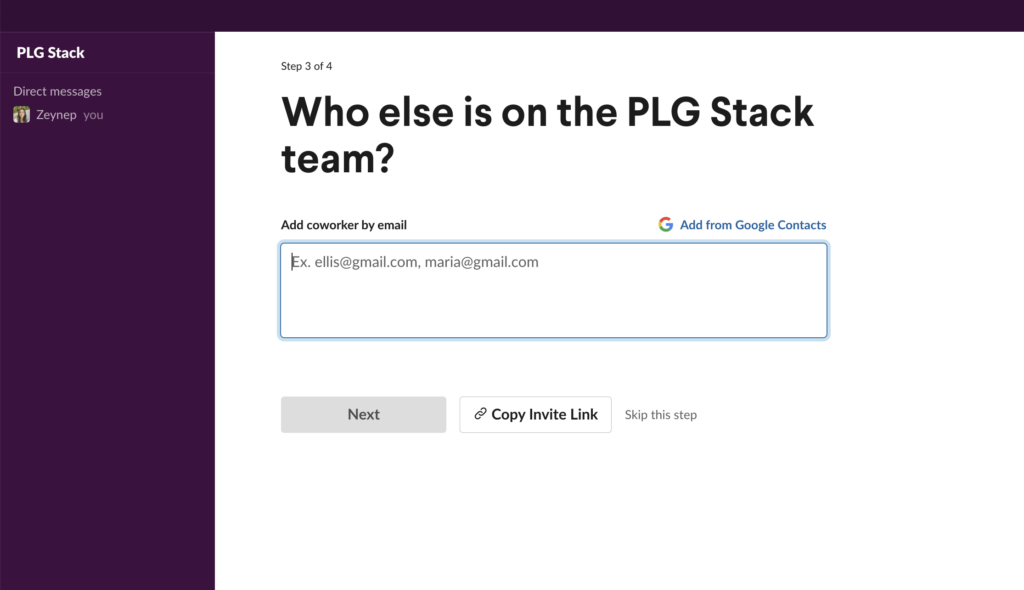
If you decide to skip this step – which is actually crucial to get the most out of Slack – then Slack gives a warning that, well, this is a crucial step!
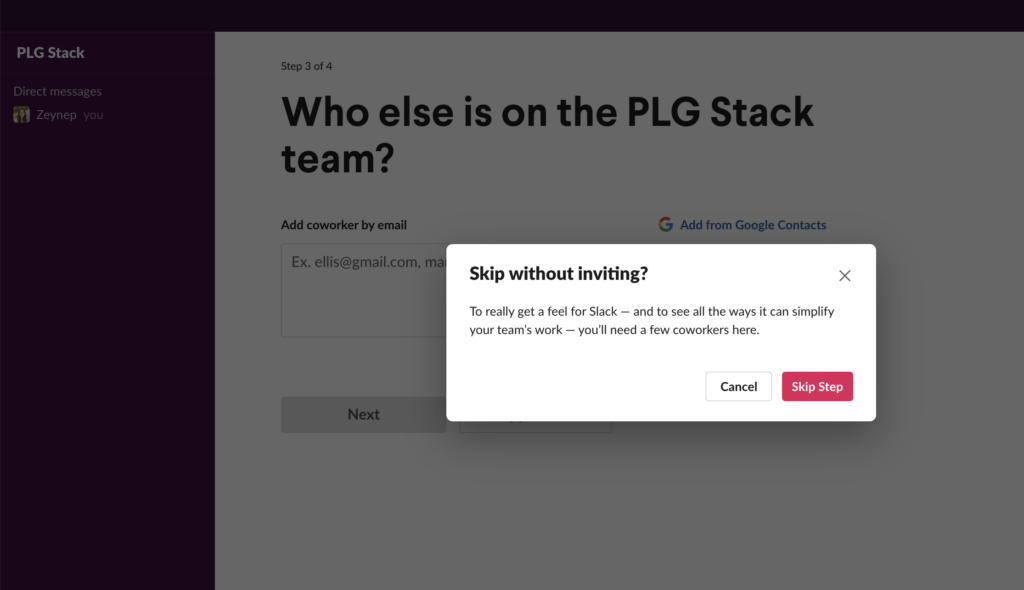
Do you see the very important role of onboarding in Slack’s route to getting you to the Aha! Moment?
Let’s take a look at another example:
Mailchimp
In Mailchimp, the big Aha! moment comes with the first email you send or the first automation you set.
In these kinds of tools, the key actions should be experienced easily, and freely, to realize the value.
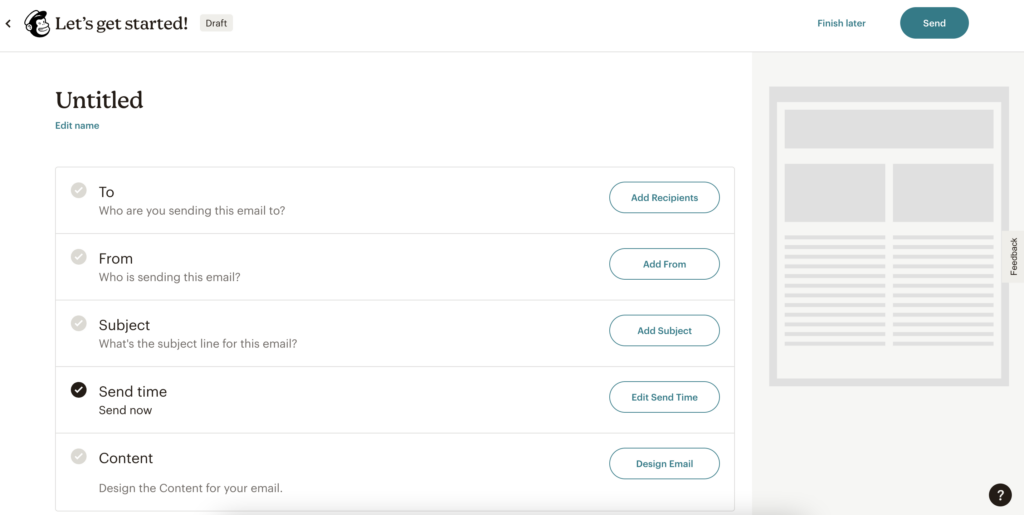
In order to send email, you need to import your contacts, too. This also leads to another realization moment, which is relatively smaller, but helps users to understand the product step-by-step.
Canva
Here is another great Aha moment success story in SaaS.
Canva changed the way we design by eliminating all complications. You don’t have to be a pro-Photoshop user now to make good enough logos or banners.
But what is Canva’s Aha moment?
It is creating a design with a template. Once the user experiences ease, Canva knows that they will stick around.
First of all, when you sign up, you will see a small hotspot on the “Play with Canva” section on the main page.
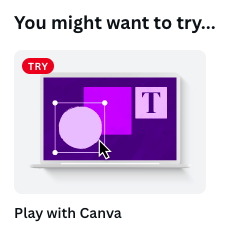
When you go in to start a design, you will see a brief product tour with 4 steps. The first step is to use a template.
Canva teaches you how to use a template to make sure your design process goes as smoothly as possible.
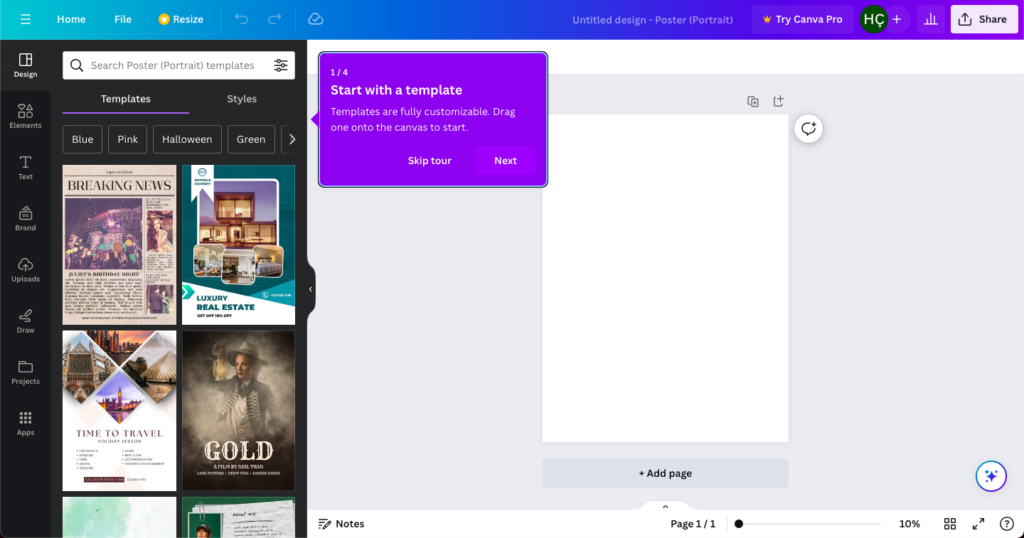
If you complete the tour, congratulations, you now probably love Canva and will keep using it – and even pay for the pro features.
Usersnap
There are so many tools using the power of templates to let users understand the easiest way of using their product and lead them to the realization moment, and Usersnap is one of them.
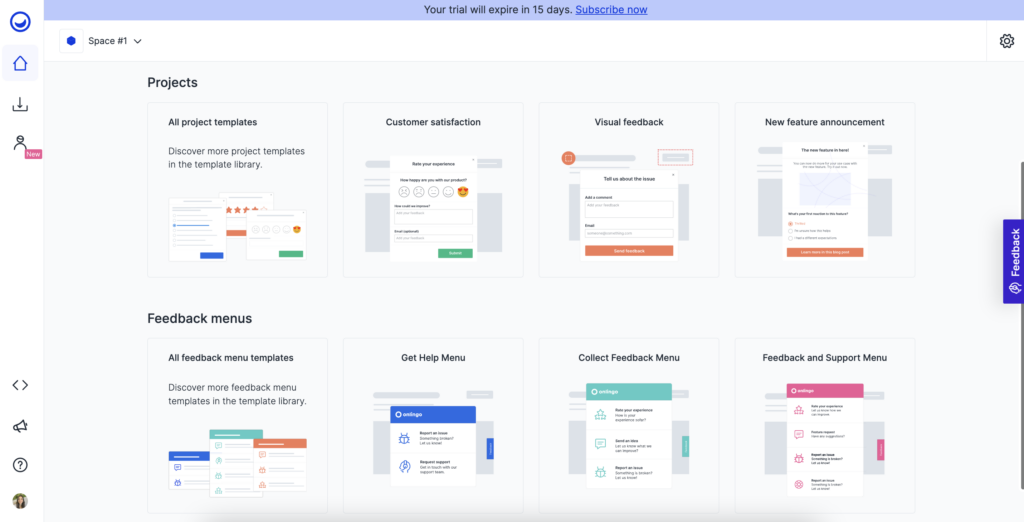
Right after starting the free trial, the ready-to-use templates meet us in the dashboard.
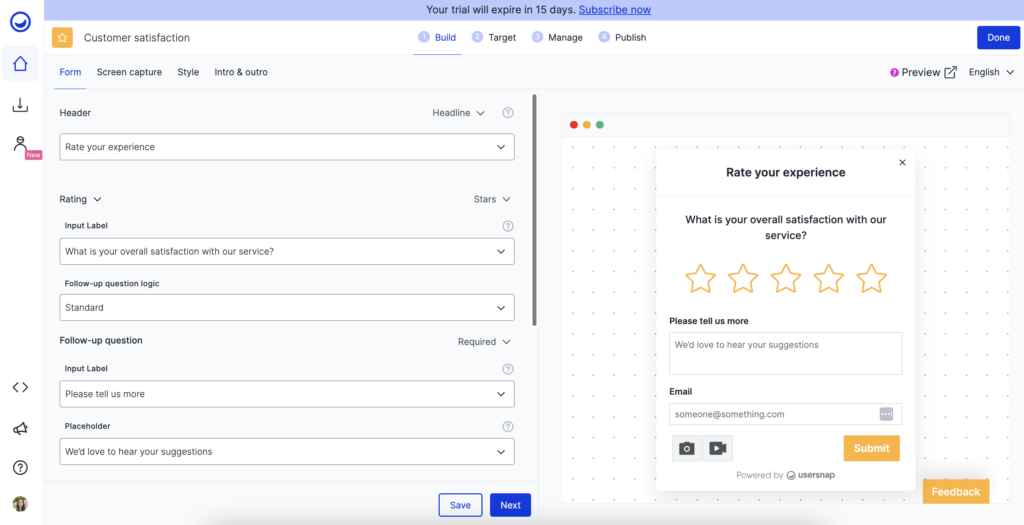
Then users can use those templates to get acquainted with the dashboard, features, and the general usage of the product, which makes them “wow” without even knowing that.
Pipedrive
Pipedrive is another good example of a great CRM.
Once you sign up, you are welcomed with a kanban-style board that has different pre-defined columns representing the stages in a regular sales process.

This creates a perfect Aha moment, as it lets users understand the product by visualizing it at the very beginning.
Plus, do you see those currency symbols under each column? That’s a very little detail, but it is really what any user wants to see 💰
Calendly
It is all about connecting your calendar to use Calendly to its full potential, and they present it at the very beginning of the user onboarding.
When you sign up with your Google account, it automatically connects your calendar to Calendly.
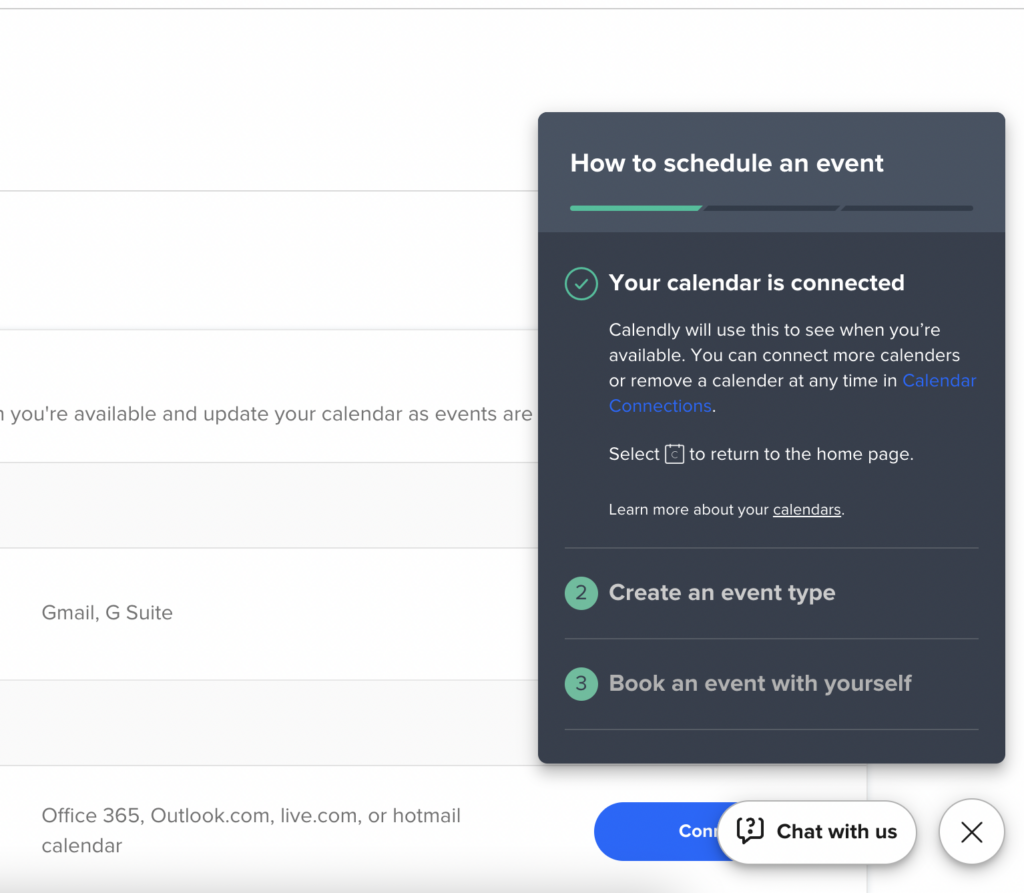
I mean, their name is even an Aha moment (well-chosen), and they make their value proposition quickly.
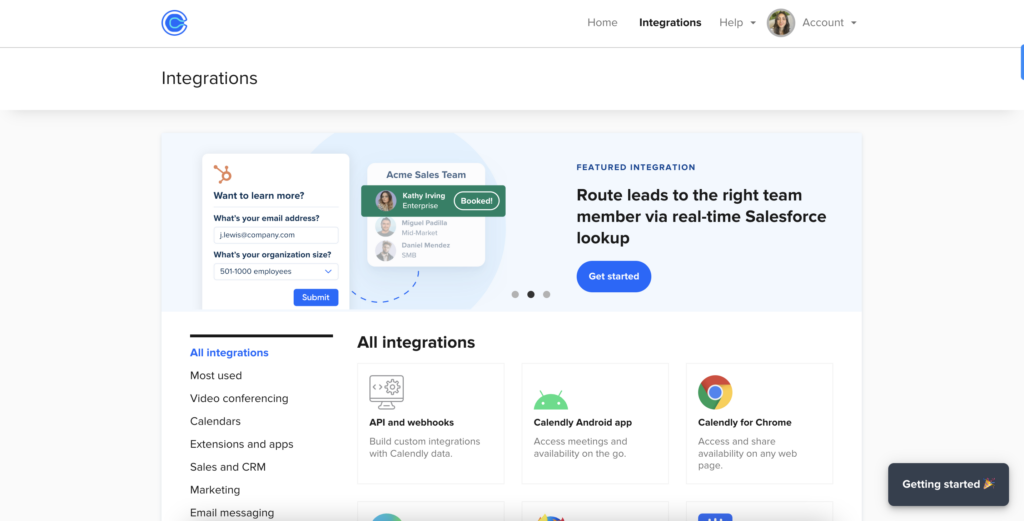
Apart from that, integrations are also important for smoothly using Calendly in our workflows and getting value from it, and they take users’ attention to their Integrations by putting it in front on their top bar.
Strategies for creating Aha moments in SaaS
Now it is time to create and identify your Aha moment. I will provide you with three tips and techniques in which you can find strategies for creating your moment in your business.
1. Simplify the onboarding process
What is the most visible similarity between the two examples above, and the one of X’s aha moment? It’s the onboarding. The user onboarding is what takes your users from “How do I use this” to “Ohhh, so that’s what it is”. In other words, the “Aha” moment.
So here are a few tricks to simplify the onboarding process:
- Keep it short, only guide them to the “aha” moment in the initial product tour, and don’t try to introduce the whole product at once.
- Keep it concise, use short sentences, and use images to convey the messages.
- And make it accessible. Let users go through the onboarding at their own pace, and make sure they know how to redo the onboarding if they need to.
2. Provide personalized recommendations
If you have different segments that use your tool differently, you need to provide personalized experiences for those segments. The most common and easiest way to do this is by adding a modal that asks what they will use the product for, just like Calendly here:
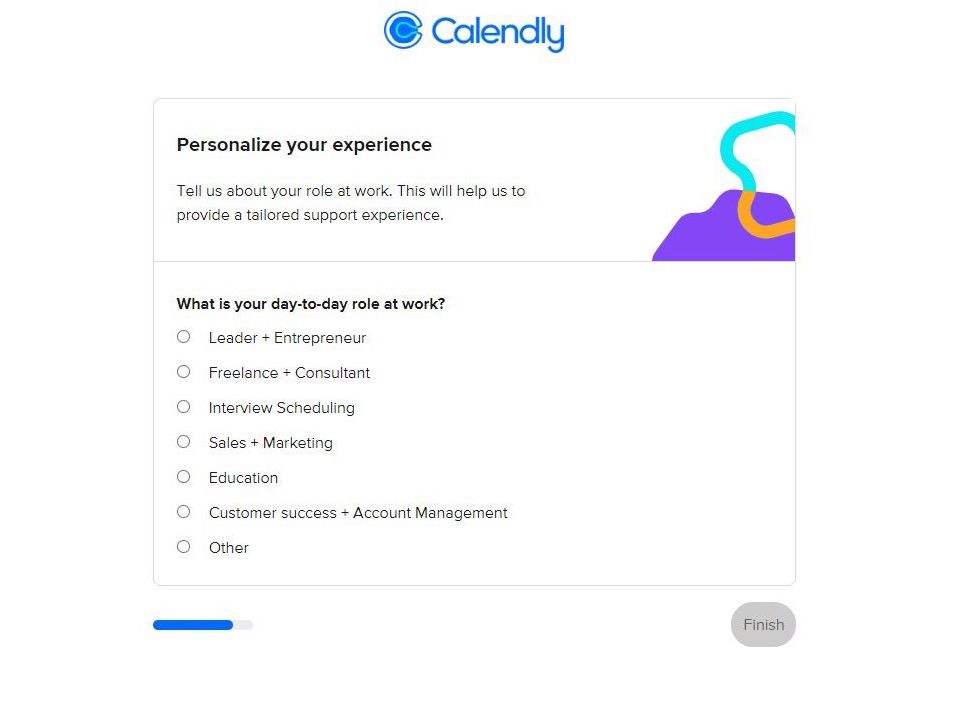
3. Offer a unique feature or functionality
“What is it that makes your product different than competitors?” The answer to this question will be a major step in finding out what your Aha moment is.
- Is your tool easier to use?
- Does it do something that other tools can’t?
- What is it that you solve that other tools can’t?
- What is it that makes you preferable over others?
This is also what your users are trying to figure out and that’s why it is important that you give them an answer as soon as they sign up. Keep in mind, that what you intend to be an “aha” moment might be different from what the user perceives as an “aha” moment. After all, it is them that your product is there to help.
How to measure the effectiveness of your Aha moments?
Measuring Aha moments in SaaS isn’t something that takes extra effort since you will be using all the data that you are already tracking to make your product better. This data includes:
- Feedback
- Metrics
- Analytics
1. Customer feedback
What do your users think of your product? What do they like most and what do they like the least?
- The things they like the most will be your differentiators. That is what people are looking for in your product, and that is where the onboarding should take them. Slack users are looking for connections, so they need to add contacts before starting. X users are looking for information, so they need to follow people before getting started. Canva users are looking for easy use, and that’s why they need to know how to use the templates before getting into the details.
- And what do they like the least? The answer to this question will provide you with information about what causes friction in their onboarding process. If it is something early on the user journey, then prioritize solving that problem over everything else.
HubSpot’s Unique Approach to Finding an Aha Moment
Why not directly ask your users? Why not encourage them to look for the HubSpot “Aha!” moment example and let them identify it?
This is exactly what Hubspot did on their forum, and they got 40 people to reply on the thread!
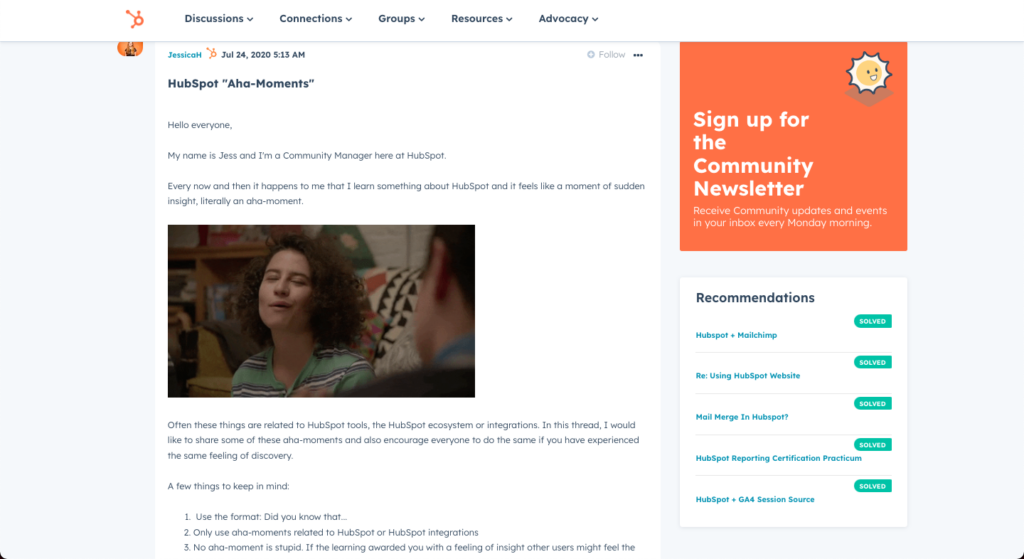
2. User engagement metrics
There is no “it” metric that will help you determine the “aha” moment. But that is a good thing.
All products have different core values and different use cases, so, whatever you are trying your users to complete, see those metrics.
They could be:
- Daily active users,
- Number of posts-messages-requests rent,
- A completion rate of a certain feature,
- Or filling in some crucial data.
So overall, the metrics that you use to determine stickiness, churn, and retention: all will help you identify your Aha moment as well.
3. Conversion rates
Conversion rates are like a flashlight highlighting the Aha moment when users get the real value of a product.
By looking at where users decide to dive in and commit, businesses can pinpoint when and where this lightbulb moment is happening. This is super helpful in figuring out when users are deciding to jump on board.
Also, by checking out which features are getting users to convert, businesses can find out which parts of their products are the real game-changers.
Knowing which features are causing these Aha Moments helps in refining the product and making it a hit with the users!
Conclusion
The Aha moment is crucial to be able to enable SaaS users to find value in your product. It is not that difficult to identify, and it is a key retention driver. It will also help you build an initial onboarding experience that actually works. So, set up your surveys, dive deep into forums, check your analytics, and answer this question: Why would/do people like to spend time on my product?

